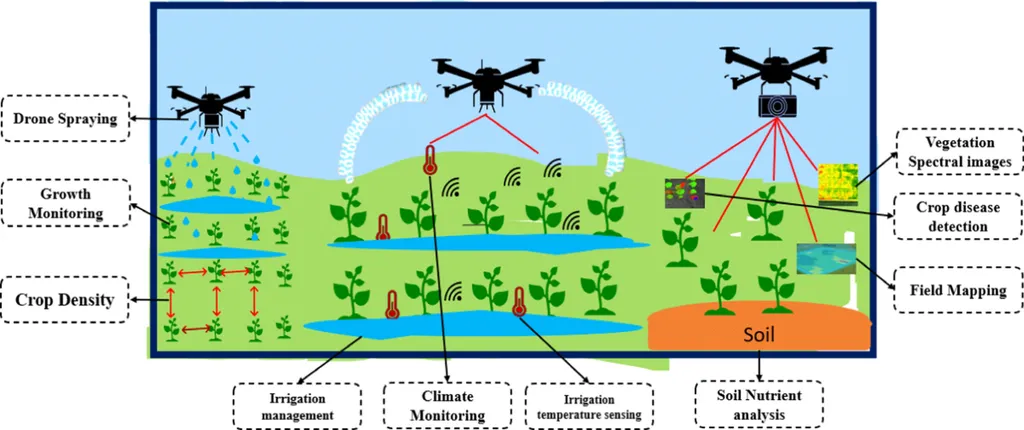In the heart of China’s Loess Plateau, a groundbreaking study is reshaping how farmers and agronomists approach water management. By harnessing the power of unmanned aerial vehicles (UAVs) and advanced modeling, researchers have developed a novel method for estimating root zone soil moisture (RZSM) with remarkable precision. This innovation, published in *Agricultural Water Management*, could revolutionize precision agriculture, particularly in water-scarce regions.
The study, led by Jichao Wang from the College of Water Resources Science and Engineering at Taiyuan University of Technology and the College of Water Resources and Architectural Engineering at Northwest A&F University, integrates UAV multispectral remote sensing with the Remote Sensing-based Water Balance Assessment Tool (RWBAT) model. This combination allows for high-resolution, crop-specific soil moisture estimation, a critical factor for optimizing irrigation and water use efficiency.
“Rapid and accurate estimation of crop root zone soil moisture is essential for precision agricultural water management, especially in arid and semi-arid regions,” Wang emphasized. The research focused on four key crops—wheat, maize, rapeseed, and apple trees—commonly cultivated in the Loess Plateau. By using high-resolution vegetation indices (VIs) derived from UAV imagery and field-measured meteorological data, the team successfully simulated multi-depth soil moisture dynamics throughout the crop growth period.
The accuracy of the RWBAT model was validated using in-situ soil moisture data from depths ranging from 0 to 140 cm. The results were impressive, with R² values indicating high simulation accuracy, particularly at deeper soil layers. For instance, the model achieved an R² value of 0.91 for wheat at 120–140 cm depth, demonstrating its robustness across different crop types.
One of the study’s significant findings was the sensitivity of soil moisture to changes in relative humidity and precipitation. The analysis revealed that increases in these factors enhance soil moisture across all crops, with precipitation having a more substantial influence at deeper soil depths. This insight could inform more strategic irrigation practices, helping farmers to use water more efficiently and sustainably.
The commercial implications of this research are substantial. Precision agriculture is increasingly becoming a cornerstone of modern farming, driven by the need for sustainable water use and higher crop yields. The UAV-RWBAT integrated approach offers a scalable solution for field-scale water resource management, enabling farmers to make data-driven decisions that optimize irrigation and reduce water waste.
“This method provides a promising tool for precision irrigation planning in heterogeneous agricultural landscapes,” Wang noted. The ability to estimate soil moisture with such precision can lead to significant cost savings for farmers, as well as improved crop health and yield. In regions where water is a scarce resource, this technology could be a game-changer, ensuring that every drop is used effectively.
Looking ahead, the integration of UAV technology and advanced modeling like RWBAT could pave the way for even more sophisticated agricultural practices. As UAVs become more affordable and accessible, their use in precision agriculture is likely to expand, offering farmers new ways to monitor and manage their crops. The research published in *Agricultural Water Management* by Jichao Wang and his team is a testament to the potential of these technologies, highlighting their role in shaping the future of sustainable agriculture.

